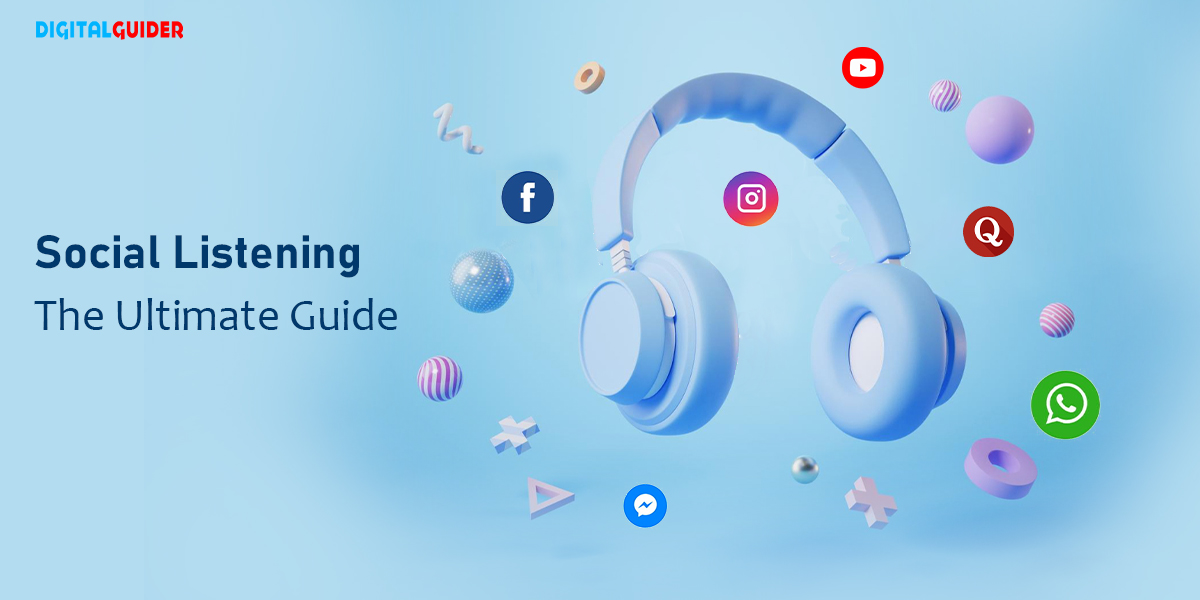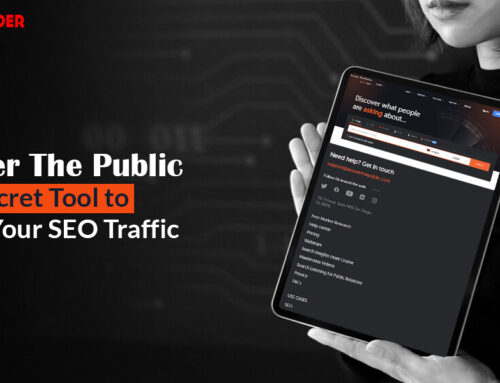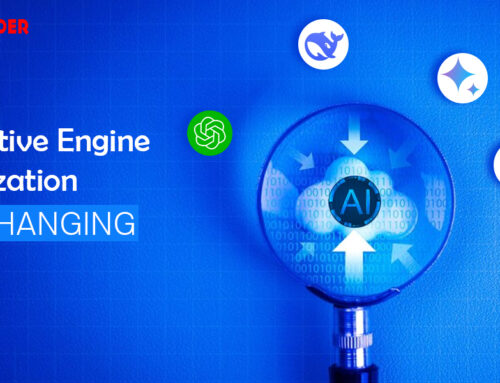What if you could hear your customers’ unfiltered thoughts, predict trends, and solve problems before they arise?
It is no longer a dream for brands.
With Social Listening, brands can achieve this by finding hidden viewpoints and trends that influence their marketing plans and customers’ relationships.
Want to learn how? Here’s a complete guide on social listening, its benefits, examples, and tips for an effective strategy with real-world examples.
What is Social Listening?
Imagine your brand recently launched a product. Apart from sales and revenue, the key questions to consider are:
- Do customers like your product?
- What conversations are happening in the market about it?
- Are there any negative opinions from your customers?
- How has your product affected your competitors?
And many more queries to know about the product’s response.
Here comes the solution to all your queries – Social Listening or Social Media Listening.
Social Media Listening is your brand’s ear that identifies what is being said about your company and its products on the internet. It transforms online noise into actionable insights, giving your brand better engagement and authentic growth.
Some of you might get confused by a similar term: social media monitoring. But both of them are entirely different.
Have a look at the difference between Social Listening Vs. Social Monitoring.
Social Listening Vs. Social Monitoring
| Basis | Social Listening | Social Monitoring |
| Definition | Analyzing Sentiments & Trends | Tracking Mentions & Comments |
| Focus | Social Media Conversations & Trends | Direct Brand Mentions |
| Purpose | Understand customer behavior & gain insights | Manage brand reputation & address customer concerns |
| Key Metrics | Sentiment analysis & brand perception | Engagement rates, mentions, reach, & follower growth |
| Actionable Outputs | Insights on improving products or campaigns | Immediate responses to complaints or questions |
| Tools Used | Advanced analytics tools (Brandwatch & Sprinklr) | Real-time tracking tools (Hootsuite & Buffer) |
| Example | Identifying shifts in consumer preferences | Responding to a customer query on Social Media |
In short, social monitoring shows you what’s happening, but social listening helps you understand why it’s happening. That’s the key to building stronger connections and strategies.
The powerful concept of Social Media Listening comes with numerous benefits for your business. Let us have a look at them.
What are the Benefits of Social Listening for your Business?

Without social media listening, you are missing out on valuable insights. It’s time to tune in and understand your targeted audience.
Here are some key benefits for your business.
→ Stronger Customer Relationships
What’s better than knowing your audience’s or potential customers’ opinions?
Social media listening provides real-time insights into customer preferences, allowing you to address complaints and change strategies accordingly.
For example, if a customer praises or mentions your product, use their feedback to improve.
→ Improves Brand Reputation & Campaign Targeting
Customers value personalization when a brand addresses their concerns.
This will create a positive image and build the trustworthiness of the brand.
→ Better Competitive Advantage
Tracking competitors’ social media marketing activities is important to reveal market gaps, engage in conversations, and grab attention with friendly competition.
For example, Wendy’s is always quick to get into the competitor’s tweet.

→ Crisis Management
If the brand is aware of the emerging issues and negative comments, it can respond swiftly to protect its reputation.
This acts as an early warning system for potential crises.
→ Better Product Development
For example, a beverage brand might notice a rising demand for sugar-free options and launch a new line to meet that demand.
Social media listening reveals emerging trends, leading to better product development strategies.
However, creating a perfect social media listening strategy is not rocket science.
Go through this simple process to create good social listening strategies.
How to Build your Social Listening Strategies?
Social listening is more than just monitoring mentions; it’s about understanding the conversations around your brand, industry, and target audience.

Here’s how to build an impactful social media listening strategy:
1. Define your Clear Goals
Answer your queries first –
- Who is your target audience?
- Are customers liking your products? Could they be improved?
- Are your goals specific, measurable, achievable & relevant?
The answers to these questions will help you find clear goals instead of getting lost in information.
2. Identify Relevant Keywords and Topics
List keywords, hashtags, and topics related to your products, brand, competitor brands, and industry.
For example, A coffee chain like Starbucks might monitor terms like “best coffee,” “morning caffeine,” or competitors like “Tim Hortons.”
3. Choose the Right Tool
Among various social media listening tools, choose one that fits your business goals, needs, budget, and ease of setup.
- Basic Monitoring – Hootsuite, Sprout Social.
- Advanced Insights – Brandwatch, Talkwalker.
4. Set-Up Alerts & Dashboards
Set up real-time alerts and dashboards to stay informed.
For instance, Coca-Cola tracks its brand, competitors, and campaign hashtags to monitor marketing buzz.
5. Analyze and Interpret Data
- Review data regularly for trends & insights to identify areas for improvement.
- Use sentiment analysis to understand brand opinions.
- Track competitor activity and engagement.
6. Take Action to Refine your Strategies
Based on your findings, modify your approach. Start with a 30-day test phase to track engagement and sentiments, then refine your strategy accordingly.
7. Measure Success Using KPIs
Measure the success of your efforts using Key Performance Indicators (KPIs) like engagement rates and sentiment analysis.
For example, Amazon tracks customer satisfaction scores, engagement rates, and sentiment shifts to ensure their strategy meets customer expectations.
Social media listening isn’t a one-time activity; it’s an ongoing process. By actively listening, brands can build loyalty and stay relevant in the market.
If you think social listening is a new concept, you are mistaken.
Various brands are already ruling the market by following this concept.
Take a look at examples of your favourite brands using social listening strategies.
Social Listening Examples from Brands You Love
As we know, all brands use social media listening. We have listed some of the top brands to provide you with a real-world example-
Spotify
Do you know that Spotify has a dedicated Twitter account and a community support website for its audience?

This helps customers share issues, music, and ideas related to the Spotify App.
Netflix
We all love binge-watching series on Netflix. However, viewers would often sleep while binge-watching.
Netflix developed a new idea of “Netflix socks,” a DIY smart sock that pauses shows when viewers doze off. This idea showed Netflix’s skill in crafting fun and relatable solutions that boosted brand love and engagement.
Domino’s
Domino’s uses the Emplifi Social Marketing Cloud to track and respond to real-time customer feedback across platforms like Facebook, Twitter, and Instagram.

For example, they quickly tackle delivery complaints using smart keyword research, keeping customers happy!
Sephora
Sephora masters in tracking beauty trends. Noticing a rise in sustainable beauty talks, they expanded their “Clean at Sephora” initiative, promoting eco-friendly products and strengthening loyalty among mindful shoppers.

Undoubtedly, these popular brands are enjoying the benefits and success of Social media listening.
As social media listening gained popularity, brands quickly adopted its tools to track metrics and engage with their audiences.
For your guidance, below are some Social listening tools to help you track the conversations and metrics.
Top 5 Social Listening Tools

1. Sprout Social
SproutSocial helps brands monitor online conversations with ease. Powered by AI, it lets you set alerts on topics of interest.
It can track 50,000 posts, helping you prevent crises, analyze trends, and measure influence.
2. Brandwatch
Brandwatch is a powerful tool that analyzes millions of online sources for valuable insights.
It helps track trends and audience behavior with features like geolocation, image recognition, and access to historical data for deeper analysis.
3. Hootsuite
Hootsuite is a favorite for its easy-to-use Quick Search tool, social media analytics, and competitor analysis.
It helps automate the tracking of conversations, keywords, and hashtags for easy monitoring of industry trends and building relationships.
4. Mention
Mention tracks 1 billion sources daily that help you monitor topics, brands, or hashtags with easy alerts and filtered mentions.
Custom reports allow you to analyze the online presence, track sentiment, and measure marketing campaign effectiveness.
5. Meltwater
Meltwater is an all-in-one marketing tool for social media monitoring, engagement reports, influencer management, and more.
It tracks 15 social networks and provides a mobile app. It’s great for PR, offering a strong media database.
These tools are the saviors of top brands to track the audience’s opinions.
Here, we are your savior to help you know some tips for powerful strategies.
Quick Social Listening Tips for your Business

Conclusion
So, if you are thinking of staying connected with your audience, social listening will be your biggest support in reaching your ultimate goal.
Connect with your audience, understand their sentiments, and refine your strategies for better product offerings.
Wondering how social listening can help your business to stay ahead and engage your audience?
Find out with Digital Guider! Contact now.
FAQs – Social Listening
Q1. Can social media listening put personal data at risk?
A1. Social media listening is ethically safe, but mishandling data can risk privacy.
Q2. How can I ensure the accuracy of social listening data?
- Use trustworthy tools (Sprout Social, Brandwatch, etc.)
- Refine keyword searches
- Do regular data quality checks.
Q3. What is sentiment analysis?
A3. Sentiment analysis determines online conversations’ emotional tone (positive, negative, neutral).
Q4. Which industries benefit the most from using social listening?
A4. While all industries can benefit; retail, tech, healthcare, and entertainment see the biggest advantages.
Q5. Can social media listening spot trends before they go mainstream?
A5. You can identify trends by tracking early social media conversations about new products.
Q6. In what ways can social listening enhance my content strategy?
A6. Identify trending topics, analyze audience interests, & find content gaps from tools like Buzzsumo & Talkwalker.
Q7. How does social listening help connect with online communities?
A7. It lets you find online communities, join relevant conversations, & build connections.
Q8. How do I manage negative feedback?
A8. Track feedback, respond quickly to fix the problem, and show transparency to rebuild trust.
Q9. Are there any free social listening tools?
A9. Yes, tools like Google Alerts or TweetDeck offer basic capabilities.
Q10. How can social listening help me find influencers in my industry?
A10.
- Track mentions of industry-based keywords
- Identify individuals with high reach, engagement, & authority.







